In today's competitive market, creating a powerful brand awareness campaign is essential for businesses to stand out and attract their target audience. According to a recent study, 81% of consumers need to trust a brand to consider buying. A branding awareness campaign is a strategic marketing effort to increase the visibility and recognition of a brand, product, or service. It plays a critical role in building brand equity and fostering long-term customer relationships.
So, If you're looking to start an awareness campaign, this article provides eight comprehensive tips on how to do it effectively and successfully.
1. Understanding your target audience
A crucial first step in creating a powerful brand awareness campaign is getting to know your target audience. Conducting market research will help you gather insights into your audience's demographics, preferences, and behavior patterns. Creating buyer personas of your ideal customers will help you develop tailored marketing messages that resonate with your target audience. Analyzing audience behavior, such as online browsing habits and social media activity, can help you identify trends and preferences that will inform your branding campaign strategy.
To better understand your target audience, consider conducting market research through email surveys, interviews, and focus groups. Analyze your competitors and their target audience to identify gaps and opportunities. Then, use website analytics tools like Google Analytics to gather demographic data and user behavior patterns.
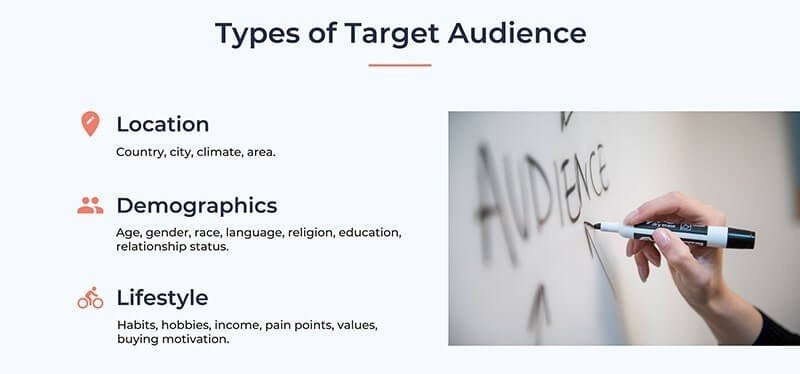
(Source: Renderforest)
To create buyer personas, compile this data into a comprehensive profile that includes demographics, preferences, and pain points. You can also use social media listening tools like Hootsuite and Mention to monitor conversations and trends related to your brand and industry. By implementing these actionable tips, you can gain deeper insights into your target audience and create a more effective brand awareness campaign.
2. Crafting your brand story
A compelling brand story is the foundation of a successful campaign. Your brand story should convey your company's mission, vision, and unique value proposition, creating an emotional connection with your audience. To craft a captivating brand story, consider the following components:
1. Your company's history
Delve into the origins and significant milestones of your organization. Sharing these moments humanizes your brand and allows your audience to relate to your journey, fostering a sense of familiarity and trust.
If your company is organized as an LLC (Limited Liability Company), then you likely have a unique story to tell about how your business came to fruition.
Perhaps you started out as a small team of entrepreneurs with a big idea, or maybe you acquired another company and merged their operations with your LLC in Texas, California, or any other US state you've organized it.
Whatever the case may be, sharing these pivotal moments in your organization's journey can help humanize your brand and foster greater trust among your audience.
2. Mission statement
Clearly articulate the purpose and objectives of your company. A well-defined mission statement demonstrates your commitment to addressing customer needs and making a positive impact on their lives. In the example below, Atlas Obscura shares its mission statement directly in the email.
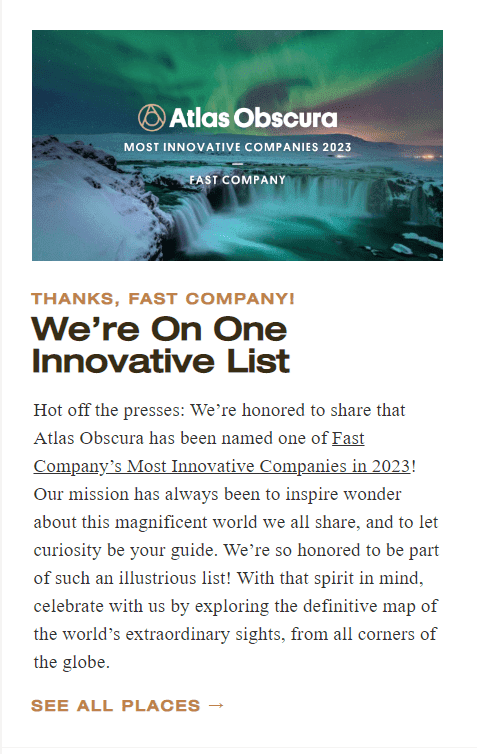
(Source: Email from Atlas Obscura)
3. Core values
Identify the guiding principles that define your company's culture and decision-making process. By showcasing your core values, you establish what sets your brand apart from the competition and demonstrate the ethical standards that guide your operations.
4. Customer testimonials
Incorporate genuine testimonials from satisfied customers to showcase the real-life benefits and positive experiences derived from your products or services. You can use these testimonials as user-generated content for your email campaigns — they will serve as powerful social proof, helping to build credibility and trust with potential customers.
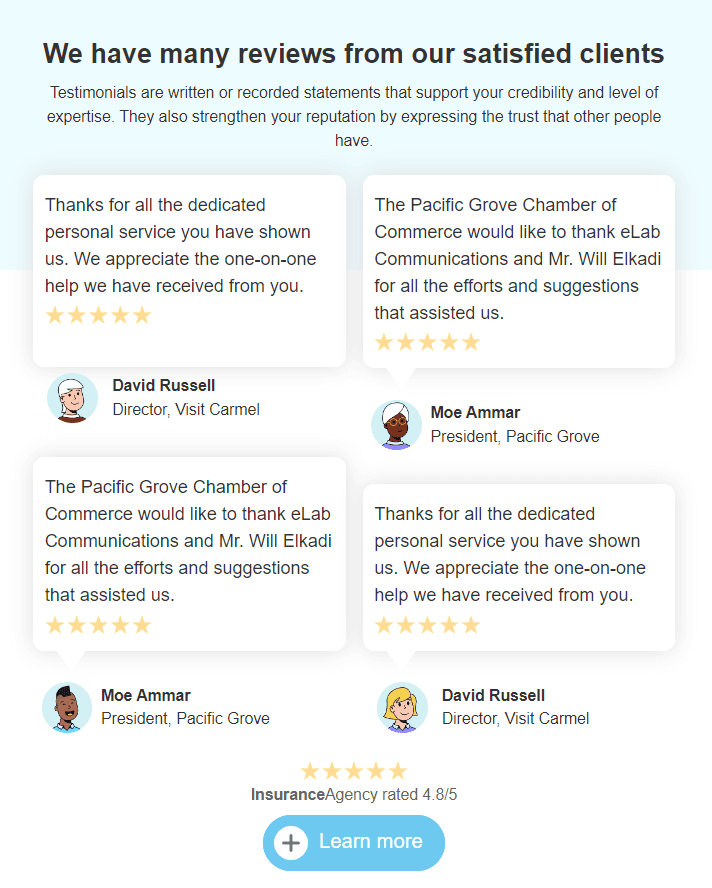
(Source: Stripo template)
Telling your brand story through engaging content, such as newsletters, blog posts, videos, and social media updates, will also help you establish a strong brand identity and foster customer loyalty. To choose the proper channels for your brand awareness campaign, assess your target audience's preferred platforms and media consumption habits. Use website and social media analytics tools to determine which channels drive the most engagement and conversions.
An excellent example of brand awareness focusing on recognizable design elements and color palette is McDonald’s. The yellow-and-red color scheme and the stylized letter “M” as a logo speak for themselves — you won’t confuse emails from this brand with other competitors.
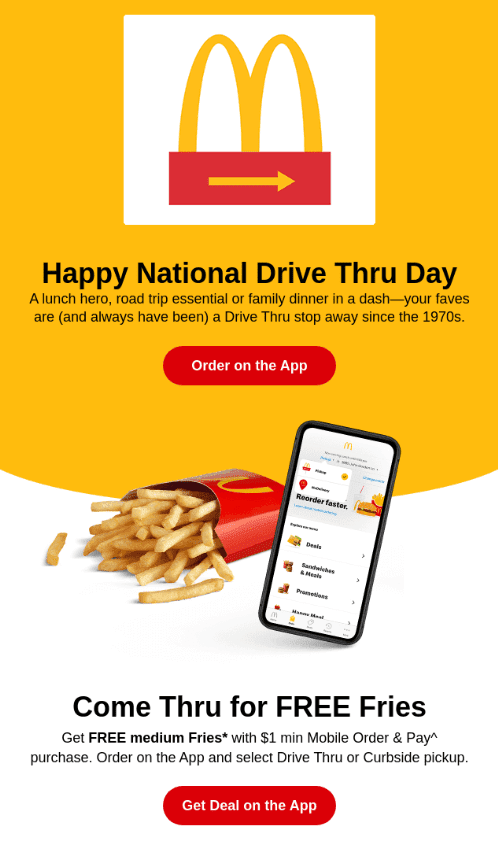
(Source: Really Good Emails)
3. Choosing the right channels
Selecting the appropriate branding channels is essential to reaching your target audience effectively. Social media platforms offer opportunities to engage with your audience and share your brand story through visual and written content.
Traditional advertising channels, such as print ads, billboards, and television commercials, can also create brand awareness, depending on your target audience's media consumption habits. Identify their preferred platforms and media habits to ensure your campaign branding reaches the right audience.
Email marketing is a highly effective channel for creating and increasing brand awareness, as it allows businesses to connect with their audience on a personal level. By sending regular, targeted emails to subscribers, businesses can keep their brand top-of-mind and build strong relationships with their customers while establishing great brand consistency.
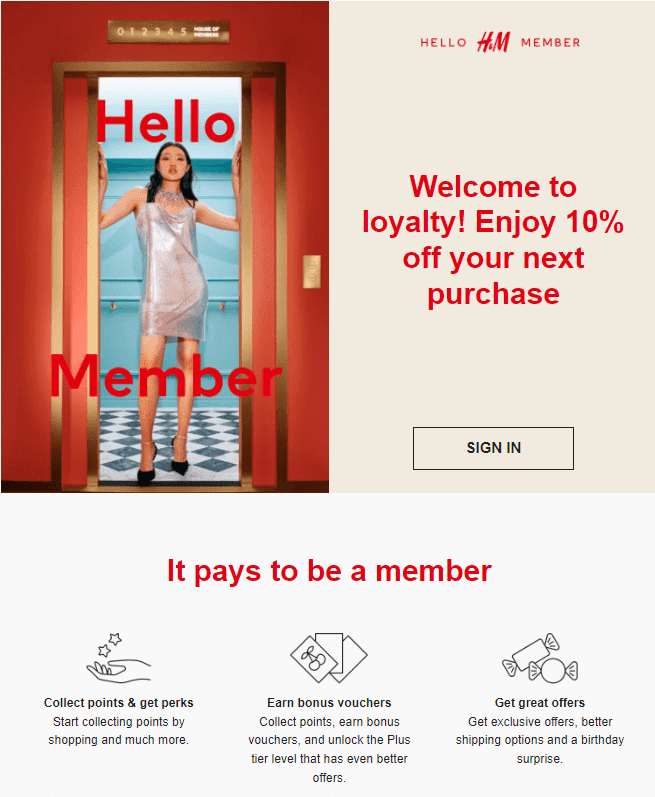
(Source: Email from H&M)
A great example of a successful brand awareness email marketing campaign is the fashion brand H&M and their "H&M Club" newsletter. They send out regular emails with style tips, exclusive discounts, and new product releases. The company’s email subscribers can also collect points by shopping, earn bonus vouchers, and get birthday surprises. By consistently providing value to its subscribers, H&M has been able to establish a strong brand identity and increase customer loyalty.
Keep track of each channel's performance and regularly assess your marketing strategy to achieve optimal results.
Some ways to do that include:
-
using analytics tools to track key performance indicators (KPIs) such as conversion rates, click-through rates, and engagement metrics;
-
setting up A/B testing to compare the effectiveness of different ad or content formats and adjust your approach accordingly;
-
regularly reviewing your marketing budget to ensure you allocate resources effectively and maximize ROI;
-
conducting customer surveys or focus groups to gain feedback on your brand awareness campaign and identify areas for improvement;
-
monitoring industry trends and adjusting your strategy to stay current with changes in consumer behavior or marketing best practices;
-
collaborating with other departments or team members to gather insights and perspectives on your marketing efforts.
4. Leveraging affiliate marketing
Affiliate marketing is a performance-based marketing strategy in which a company rewards affiliates for each customer brought by their marketing efforts. This approach can be highly beneficial for brand awareness advertising, as it helps you reach new audiences and build brand credibility through trusted partners.
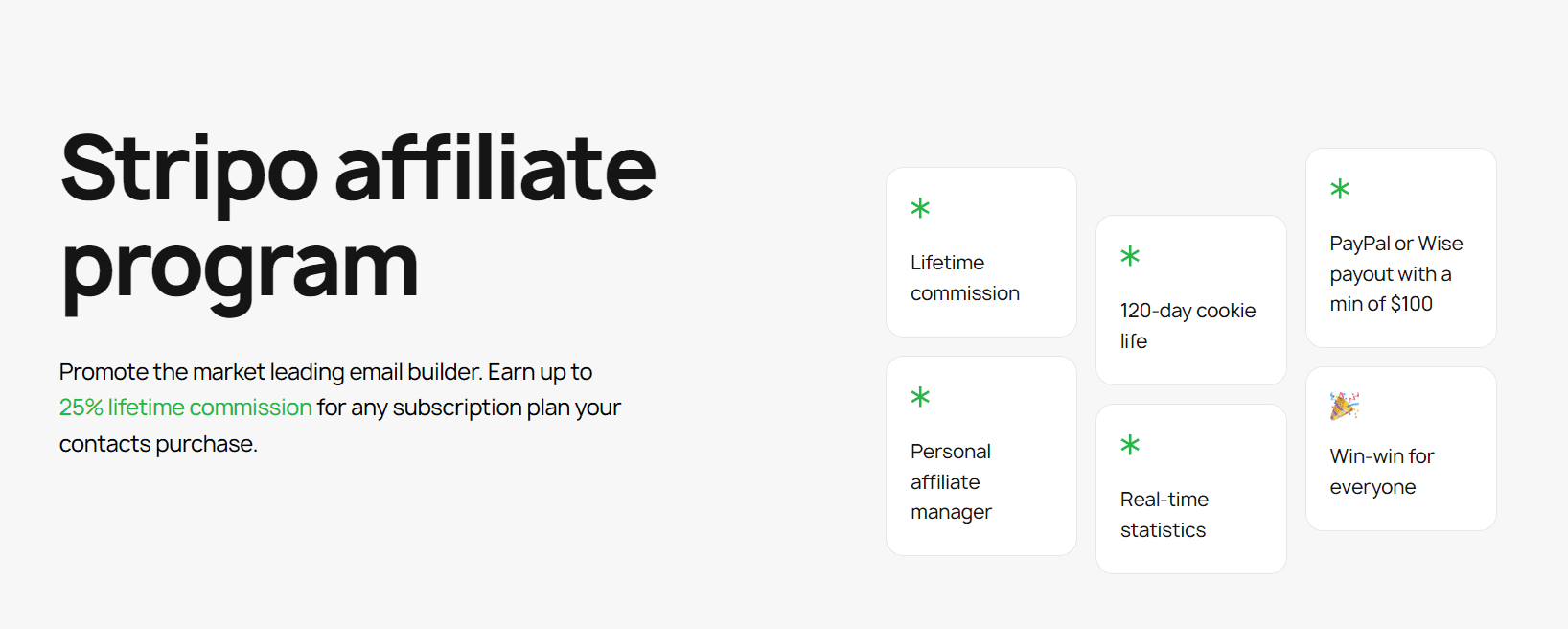
(Source: Stripo affiliate program)
To leverage affiliate marketing, select affiliate partners who align with your values and audience, create an attractive affiliate program, and provide effective marketing materials that affiliates can use to promote your brand. In addition, you can use affiliate marketing software to measure the success of your affiliate campaigns to determine their effectiveness and guide your future marketing efforts effectively.
Here are some actionable tips for setting up your affiliate campaign right, with a focus on your brand:
-
begin your branding awareness campaign's affiliate marketing approach by identifying potential affiliate partners that share brand values and cater to similar target audiences;
-
develop an attractive affiliate program that offers competitive commission rates and incentives to encourage participation;
-
provide your affiliates with the necessary marketing materials, such as banners, promotional content, and product information, to promote your brand effectively;
-
track your affiliates' performance using analytics tools, and provide regular feedback and support to help them optimize their marketing efforts;
-
continuously evaluate and refine your affiliate program based on performance data and feedback from affiliates.
5. Creating engaging visuals
Visuals play a significant role in branding, as they help to convey your brand's personality and create a memorable impression on your audience. Choosing colors and fonts, creating a logo, and developing brand guidelines will ensure consistency across all your branding materials. Engaging visuals in your brand awareness marketing strategy will enable you to grab your audience's attention and reinforce your brand identity.
To create engaging visuals for your branding awareness campaign:
-
start by developing a visual identity that reflects your brand's personality and values;
-
use online design tools like Canva or Adobe Creative Cloud to create eye-catching graphics images and videos;
-
select colors and fonts that evoke the desired emotions and associations with your brand.
Design a memorable logo that aligns with your brand voice and style guide. Incorporate your visual identity consistently across all marketing materials and platforms, including your website, social media profiles, email templates, and print materials. Regularly update and refresh your visuals to maintain audience interest and keep your brand image current.
In the example below, you can see how ColourPop Cosmetics uses animated GIFs in its email to showcase a product.
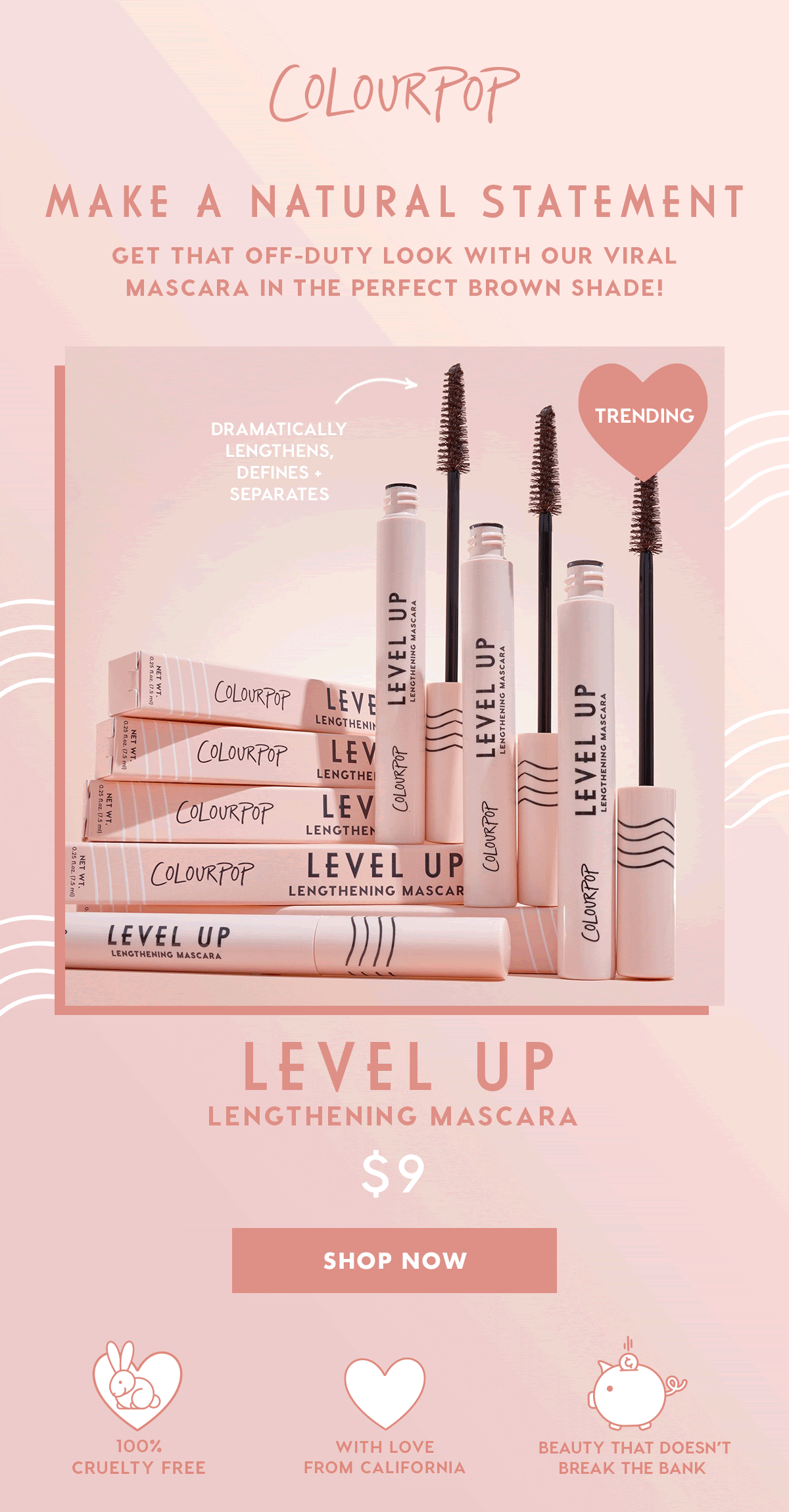
(Source: Email from ColourPop Cosmetics)
6. Utilizing influencers
When it comes to running brand awareness ads, influencers can play a significant role in building trust and generating awareness among your target audience. To get the most out of influencer marketing, it's essential to choose the right influencers who align with your brand values and audience.
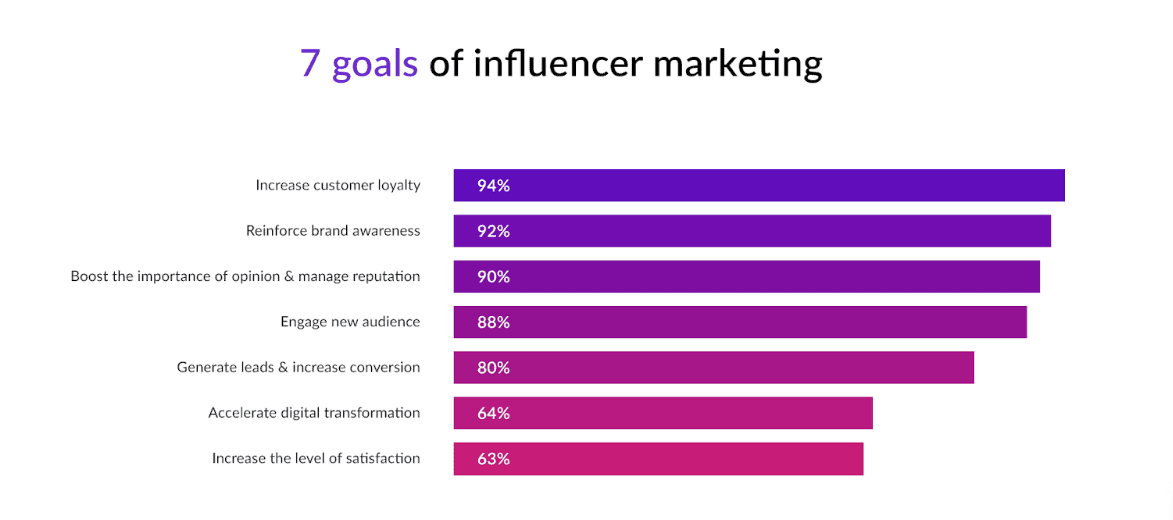
(Source: Kobe)
A comprehensive influencer strategy that outlines your goals and expectations is crucial for successful campaign building. Measuring the success of your influencer campaigns can help you optimize your approach and maximize results. Furthermore, influencer marketing has the potential to bring in more benefits than you might expect.
Take a look at the email below. Eight Sleep invited three athletes to share their opinions on using the brand’s products (photos and ratings included).

(Source: Really Good Emails)
To effectively utilize influencers in your branding awareness campaign:
-
research potential influencers who are relevant to your industry and have a solid appeal to your target audience. Evaluate their content, engagement rates, and followers' demographics to determine their suitability for your brand;
-
reach out to potential influencers with a personalized proposal that outlines your campaign goals, expectations, and potential benefits for the influencer;
-
develop a collaborative influencer strategy that includes content guidelines that ensure consistency in messaging and tone, promotional timelines that synchronize influencer activities with your overall marketing efforts, and performance tracking that allows you to measure the success of the campaign and make data-driven decisions to optimize results;
-
measure the success of your influencer campaigns using metrics like engagement, reach, and conversions, and refine your strategy based on the results.
7. Building brand awareness through content
Content is vital in building a brand awareness strategy, allowing you to showcase your brand's personality, expertise, and values. Creating a content strategy, including defining your content goals, target audience, and distribution channels, will help you create valuable, engaging content, such as email campaigns, blog posts, videos, infographics, and social media posts, that resonates with your audience.
Distributing your content through various channels, such as email marketing and guest posting, will increase its visibility and reach.
8. Measuring your campaign's success
The importance of closely tracking the performance of your brand awareness campaigns cannot be overstated, as it is key to maximizing your efforts and ultimately reaching your desired objectives. By diligently examining the data collected from your campaign, you can gain valuable insights into what is working and what needs improvement. This will empower you to fine-tune your approach, leading to a more targeted and effective brand awareness campaign that drives better outcomes.
To measure brand awareness, be sure to have:
-
clear objectives and key performance indicators (KPIs) at the outset;
-
brand awareness metrics, such as brand recall, recognition, and search volume, using tools like Google Trends and BrandMentions;
-
email marketing metrics (open rate, clickthrough rate, conversion rate, bounce rate, and unsubscribe rate);
-
social media and website analytics tools to measure engagement metrics, like likes, shares, comments, and time spent on your content;
-
clear campaign awareness data of your campaign to identify trends, improvement areas, and optimization opportunities.
Regularly adjusting your brand awareness campaign strategy based on data analysis is crucial for improving results. This iterative process helps you to identify successful tactics and rectify underperformance, fostering continuous growth. Adopting this proactive approach ensures your brand remains competitive in the ever-evolving market landscape.
Wrapping up
In conclusion, creating a powerful branding awareness campaign is a multi-faceted endeavor that requires careful planning, execution, and monitoring. By understanding your target audience and crafting a compelling brand story, you can effectively resonate with potential customers. Remember to choose the right channels and create engaging visuals to capture your audience's attention.
Finally, measuring your campaign's success will help you optimize your efforts and ensure your branding awareness campaign yields the desired results. By following these 8 tips, you are well on your way to creating a powerful and impactful brand awareness campaign that will propel your brand to new heights in the competitive marketplace.


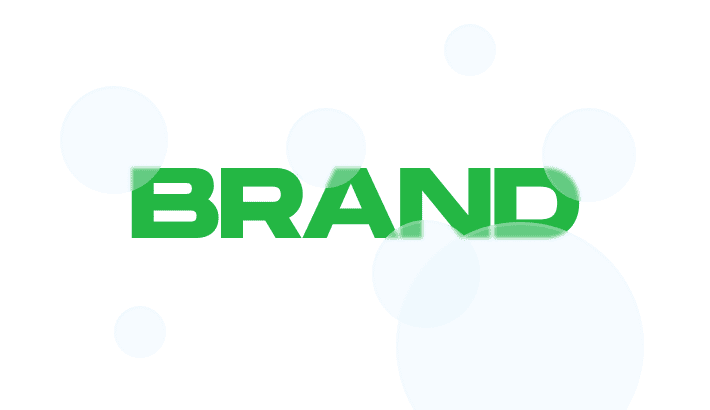

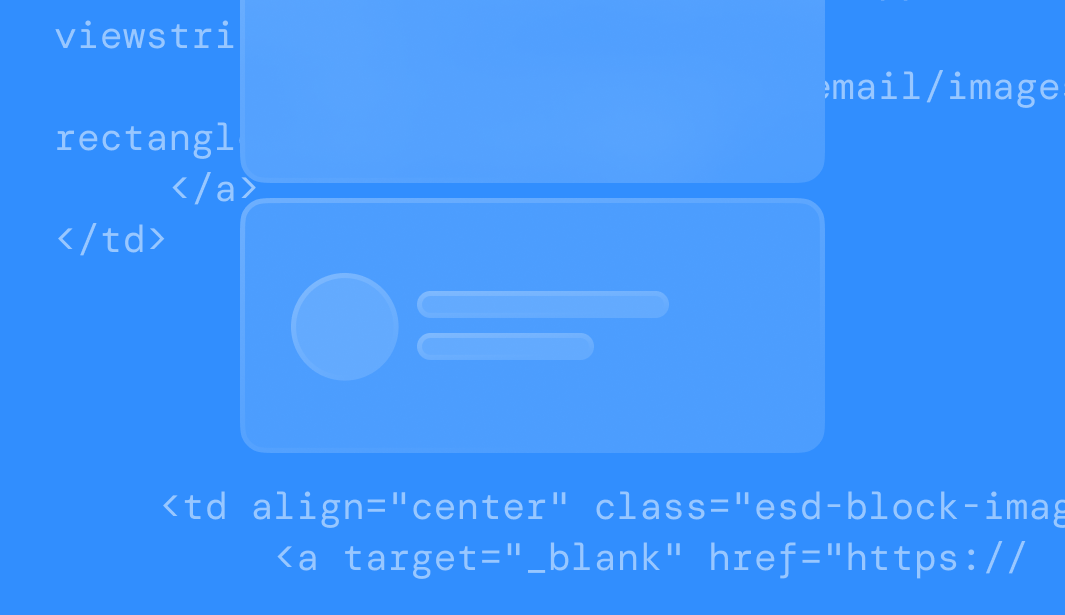


0 comments